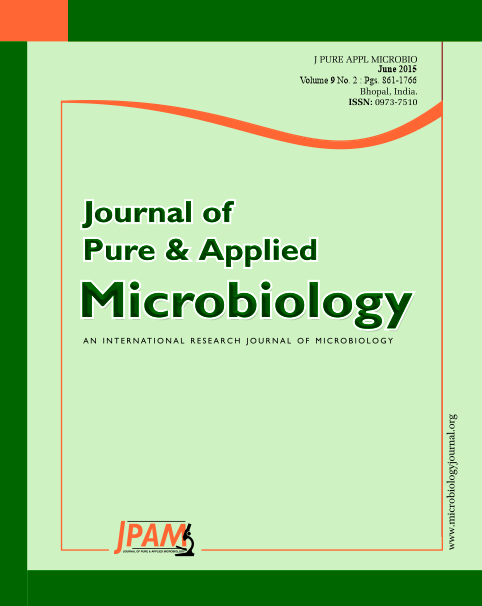The populations of Rhizoctonia solani (40 isolates) causing web blight/ wet root rot in mungbeanrepresenting 7 anastomosis groups (AGs) from 11 states of India were analysed for genetic diversity utilizing pathogenicity andinternal transcribed spacer(ITS) region. The isolates caused 23% to 100% disease incidence and the majority of the isolates (75%) proved to be highly virulent. The nucleotide sequences of ITS region of the pathogen varied from 571bp to 722bp.The phylogenetic analysis of 10 isolatesof R. solani from the present study and 9 isolates representing other parts of the world using neighbor joining and maximum parsimonyshowed high level of genetic similarity whereas, the northern and southern Indian populations were clustered separately. Northern Indian populations were clustered with the isolates of Asian origin. Thespecific markers viz., BKF1 and BKR1 were designed from ITS sequences. Sequence characterized amplified region (SCAR) markers viz., BKF2 and BKR2 were also developed from a specific RAPD fragment for detection of R. solani. ITS and SCAR based markers provided a specific and sensitive detection up to the DNA level of 100 pg through conventional PCRof R. solani. The markers BKF1 and BKR1 detected 1pg while BKF2 and BKR2 detected 5 pg of genomic DNA of R. solani using real-time PCR assay.
Diversity, PCR marker, ITS,Real time QPCR, Rhizoctonia solani
© The Author(s) 2015. Open Access. This article is distributed under the terms of the Creative Commons Attribution 4.0 International License which permits unrestricted use, sharing, distribution, and reproduction in any medium, provided you give appropriate credit to the original author(s) and the source, provide a link to the Creative Commons license, and indicate if changes were made.


